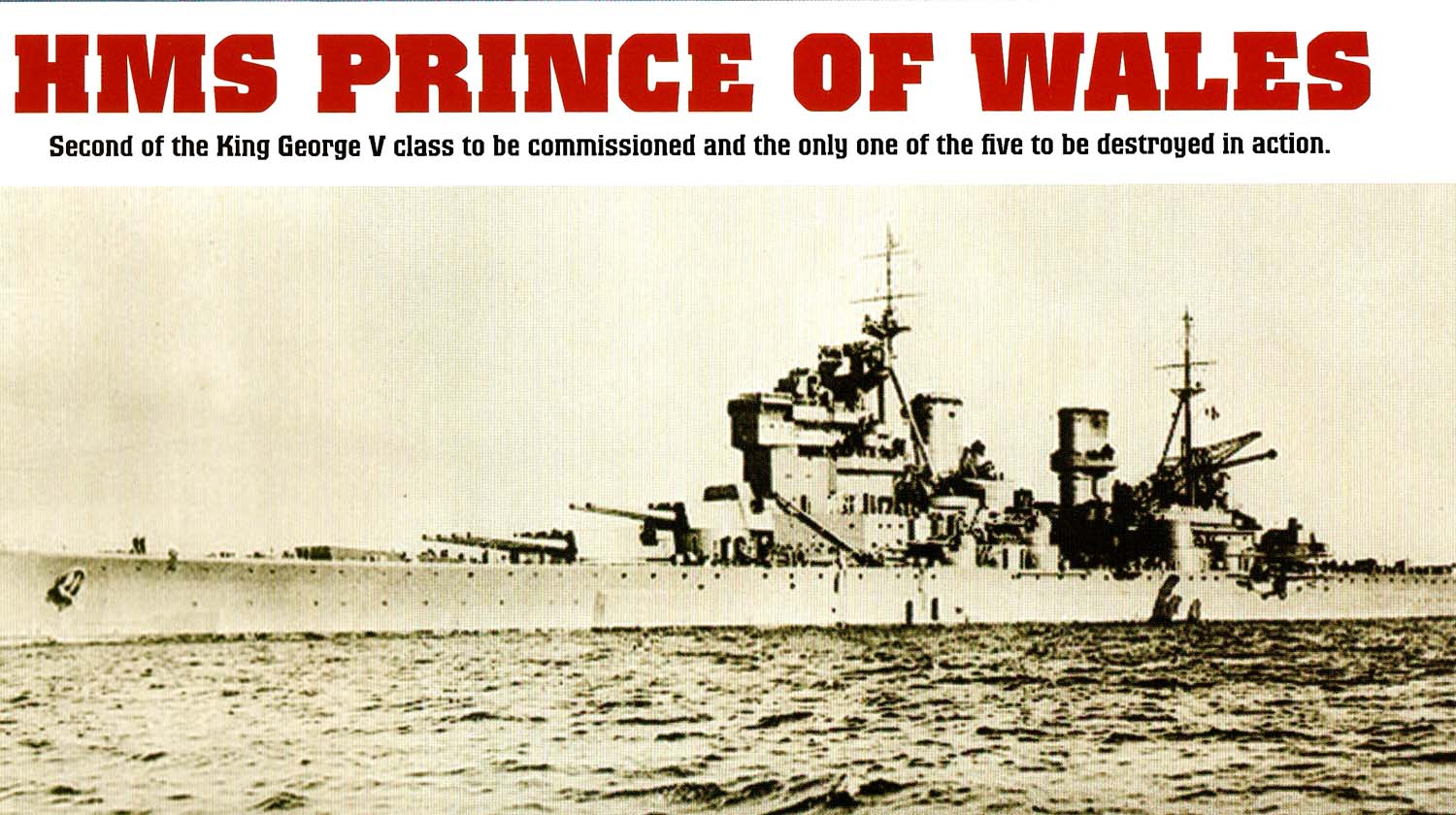
Dedicated to the memory of all those souls who
lost their lives, both German and British & Allied
![]()
My first ever book - order it here
|
HMS Prince of Wales Fact File
Displacement: 38,000 tons
(41,460 laden) When war was declared, the HMS Prince of Wales was still being fitted out in Birkenhead, Merseyside. Work continued to get her ready for action but she was still at her berth when she suffered damage from German bombers. Bombers attacked the port between August 1940 and January 1942, killing nearly 4000 people. Her commission was hastened by cancelling some of the tests and sea trials and she was commissioned in early 1941. Workers continued to conduct some minor work for another 8-9 weeks. One of 5 King George V class Battleships, the Prince of Wales saw brief but widespread action and was involved in the famous chase after the German Battleship Bismarck in which HMS Hood was sunk. PoW being badly damaged and could not continue the pursuit. Following on from repairs, PoW carried Churchill across the Atlantic to meet up with US President Roosevelt. Then, on her return, she was sent off to the Med, where she successfully engaged Italian aircraft during the siege of Malta. Then, with HMS Repulse, she was deployed to the Far East to counter the threat from Japan. On the same day as Pearl Harbour, Dec 7th 1941, the Japs invaded Malaya. PoW, Repulse and 4 destroyers were sent to hit the Japanese invasion force. Finding no targets, they returned to Singapore, on 10th December were attacked by Japanese bombers and torpedo planes. They were hit many times by bombs. Repulse was sunk first, and half hour later, the Prince of Wales. They were the first capital ships ever to be sunk by aircraft on the open seas, a stunned world heard whilst still recovering from the shock of the Japanese cowardly sneak attack on Pearl Harbour 3 days earlier. This event was considered by many to be the beginning of the end for the capital ship being a predominant force in naval warfare. Many lessons were learnt, the stronger hull of the PoW than the Repulse enabled her to remain afloat for longer, thereby enabling the rescue of a lot more of her crew. The importance of radar in giving warnings of attack. The radar on the PoW was defective. Properly trained AA gun crews, would have given the Japs a more of a bloody nose, possibly avoiding the torpedo planes and could have resulted in them not being sunk.
KING GEORGE V-Class Battleship ordered from Cammell Laird at
|
Video Clips
http://www.youtube.com/watch?v=wMXqvWq4h-E
http://www.youtube.com/watch?v=-AppnaSjHzI&feature=related
http://www.youtube.com/watch?v=Qve2Km_eMv4&feature=related
![]()
Maritime Disasters of WW2. My first
ever book - order it here - please? £11 only - click on the banner
Buy My WW2 Book here - Bismarck is featured